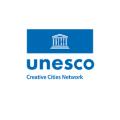
Creativity and Cities

Urban areas are the principal breeding grounds for the development of new strategies, policies and initiatives aimed at making culture and creativity a driving force for sustainable development and urban regeneration. Through innovation and the promotion of social cohesion, as well as citizen well-being and inter-cultural dialogue, cities respond to global contemporary challenges, such as economic growth, health crises, environmental impacts, and social tensions.
The crucial role of cities in promoting sustainable development focused on people and local communities and stakeholders is notably recognized in the 2030 Agenda for Sustainable Development which includes among its 17 goals a specific objective to ‘make cities and human settlements inclusive, safe, resilient and sustainable’. It also identifies culture and creativity as one of the essential levers for action.

As such, the UCCN contributes to UNESCO’s global efforts in effectively supporting Member States in the delivery of the 2030 Agenda through its member cities notably by promoting and stimulating culture and creativity driven policies, strategies, plans and initiatives at the city level. Furthermore, the UCCN ensures the alignment of its strategic objectives and activities with the Organization’s priority areas of action.
The UNESCO World Conference on Cultural Policies and Sustainable Development – MONDIACULT 2022, has further recognized culture’s strategic role and reaffirmed culture as a “global public good”. The MONDIACULT 2022 Declaration advocates for a systemic anchoring of culture in public policies at the local level by calling for stronger efforts to engage and mobilize local stakeholders and partners, notably including through the UNESCO Creative Cities Network.
It is first and foremost at the local level that culture and creativity are preserved, lived, practiced and innovated on a daily basis. It is therefore by stimulating cultural sectors, supporting creation and cultural professionals, promoting citizens’ cultural participation, and approaching the public sphere with a new perspective that public authorities, in cooperation with the private sector and civil society, can make a difference, and support a more sustainable urban development suited to the practical needs of the local population.
Multilevel cooperation and knowledge-sharing are crucial to leverage creativity for urban development and conceive new solutions to common challenges at the local level around the globe. In this regard, UNESCO’s Creative Cities Network offers unparalleled opportunities for cities to draw on peer learning and collaborative initiatives, to fully capitalize on their cultural assets and use them as founding pieces for sustainable, inclusive and balanced development across economic, social, cultural and environmental dimensions.


